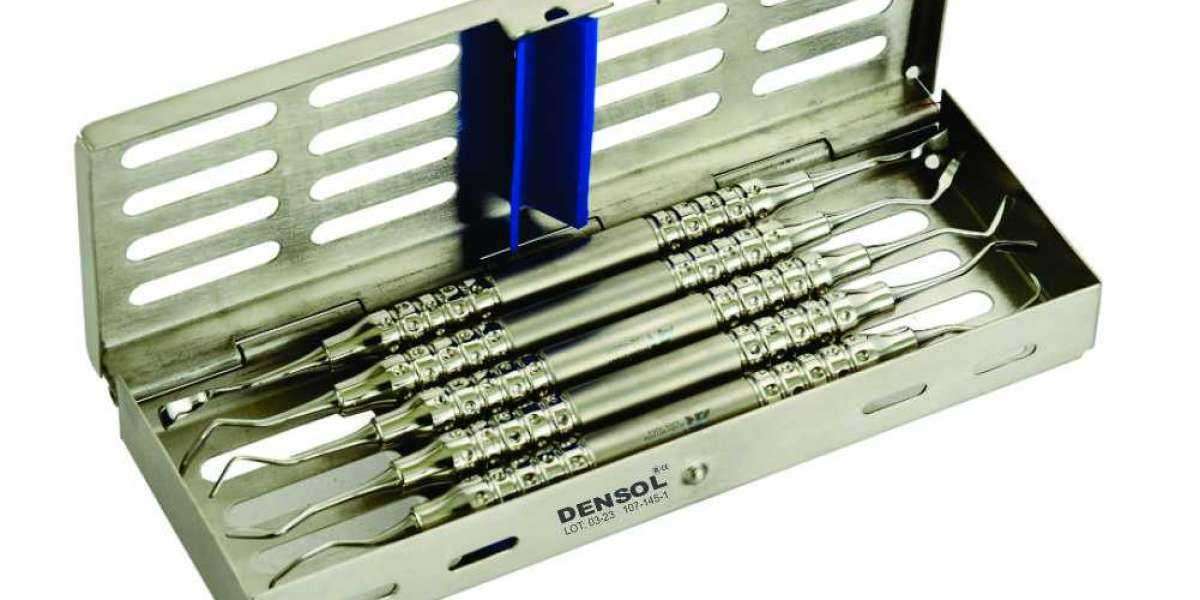Instrument cassettes play a vital role in healthcare settings, particularly in surgical and dental practices, where organization, sterilization, and safe handling of instruments are critical. Designed as secure, modular storage systems for medical and dental instruments Instrument cassettes streamline the workflow for healthcare professionals by reducing handling time, enhancing cleanliness, and ensuring efficient sterilization. From stainless steel to advanced composite materials, cassettes have transformed the way instruments are stored, transported, and cleaned, thereby improving efficiency and patient safety in medical settings.
What Are Instrument Cassettes?
Instrument cassettes are specialized trays with compartments designed to hold medical or dental tools in place securely. Often crafted from durable materials such as stainless steel or high-grade plastic, these cassettes are made to withstand high-temperature sterilization processes, including autoclaving. They come in various sizes, configurations, and designs tailored to meet specific procedural needs, from minor dental procedures to complex surgical interventions.
Key Benefits of Using Instrument Cassettes
- Enhanced Organization and Efficiency
Instrument cassettes help healthcare providers keep instruments organized by type, size, and function, making it easy to access them during procedures. Each instrument has a designated slot, preventing clutter and confusion in the operating or procedure room. Additionally, organized instruments allow for quicker setup and turnover times between procedures, optimizing workflow and minimizing downtime. - Improved Sterility
In healthcare, cleanliness is crucial for preventing infections. Instrument cassettes offer a structured way to maintain sterility throughout various handling stages. The cassettes are designed to go directly into sterilization machines without the need for removing the instruments. This minimizes human contact and contamination risk, ensuring that tools remain sterile until used in a procedure. - Enhanced Safety for Staff
Instrument cassettes reduce the risk of accidental injuries. By securely holding each instrument in place, these cassettes prevent sharp or pointed tools from shifting around, which could otherwise cause accidental cuts or punctures. The cassettes can also serve as a protective barrier, reducing the handling of contaminated tools and limiting exposure to biohazardous materials. - Protection of Instruments
Medical and dental instruments are expensive and need to be preserved for long-term use. Instrument cassettes prevent the tools from colliding or scratching against each other during handling, storage, or transport. This protection helps prolong the life of each instrument, making it a cost-effective solution for medical facilities.
Types of Instrument Cassettes
There are several types of instrument cassettes based on material, design, and intended use. Here are a few common types:
- Stainless Steel Cassettes: Known for their durability and heat-resistance, stainless steel cassettes are widely used in various medical fields. They can withstand repeated autoclaving without warping or degrading, making them ideal for long-term, high-intensity use.
- Plastic or Composite Cassettes: Lightweight and resistant to corrosion, these cassettes are often used in dental settings. Composite materials are especially beneficial in facilities looking to reduce tray weight while maintaining structural integrity.
- Customizable Cassettes: Many manufacturers offer customizable instrument cassettes that allow medical facilities to tailor compartments to specific instruments. This feature is valuable for specialized procedures that require unique instruments in precise configurations.
The Role of Instrument Cassettes in the Sterilization Process
Instrument cassettes significantly streamline the sterilization process. Once a procedure is completed, instruments remain in the cassette, which is then placed in an ultrasonic cleaner or washer-disinfector. After washing, the cassette can be moved directly to an autoclave for sterilization without removing any instruments. This process minimizes handling and decreases the risk of contamination.
Most cassettes also have built-in drain holes to allow for thorough rinsing and drying, ensuring that no residual water or cleaning agents remain trapped. This is especially important for maintaining sterility and preventing corrosion or buildup on instruments over time.
Features to Consider When Choosing an Instrument Cassette
- Material Quality
Choose a cassette made from materials compatible with your sterilization process. Stainless steel and high-quality composites are often preferred for their durability and resistance to harsh cleaning agents. - Size and Configuration
Select a cassette that fits the specific instruments used in your practice. If your procedures require a variety of instrument sizes, consider cassettes with flexible layouts or modular inserts that can be adjusted to accommodate different tools. - Ease of Cleaning
Look for cassettes with an open design that allows for easy rinsing and thorough drying. Cassettes with fewer crevices and nooks are easier to clean and less likely to harbor contaminants. - Color-Coding Options
Some cassettes offer color-coding or labeling options, which help in quickly identifying the correct set of instruments. This is particularly useful in busy practices with multiple procedures and instrument sets. - Ergonomic Design
Since healthcare staff handle instrument cassettes frequently, ergonomic features like comfortable handles, secure locking mechanisms, and lightweight materials can make a difference in day-to-day use.
Applications of Instrument Cassettes in Healthcare
- Dental Clinics: Dentists and hygienists use cassettes to organize and sterilize basic to advanced toolsets, including mirrors, scalers, and curettes. The compact nature of these cassettes suits smaller dental clinics where space efficiency is essential.
- Surgical Centers: Operating rooms in hospitals rely heavily on instrument cassettes for quick and efficient access to sterilized tools, ensuring that surgeons have the necessary instruments ready and organized for each procedure.
- Veterinary Practices: Veterinarians also benefit from the organization and sterilization advantages of instrument cassettes, especially in multi-patient practices where toolsets are reused frequently.
Best Practices for Using Instrument Cassettes
- Regular Maintenance: Clean and inspect cassettes periodically to ensure they are free from corrosion or wear that could compromise their functionality or sterility.
- Avoid Overloading: Overloading a cassette with too many instruments can damage both the cassette and the tools. Stick to the recommended capacity to ensure optimal protection.
- Label Clearly: Labeling cassettes with the types of procedures or instruments they contain can help streamline workflow and prevent errors.
- Store Properly: Ensure cassettes are stored in a dry, sterile environment when not in use to maintain their integrity and prevent contamination.
Conclusion
Instrument cassettes are an invaluable asset in healthcare settings, enhancing efficiency, improving safety, and maintaining sterility standards. By organizing tools, reducing handling, and ensuring smooth transitions through the sterilization process, instrument cassettes support optimal patient care while safeguarding both staff and equipment. With a well-chosen set of instrument cassettes, medical facilities can achieve greater operational efficiency and uphold the highest standards of hygiene and safety.



